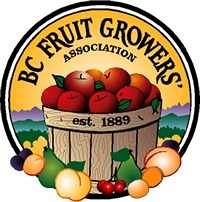Fruit Tree Nutrition
Proper nutrition is essential for tree health, optimal growth, and high-quality yields. Understanding how to manage the nutritional needs of fruit trees involves a combination of knowledge, assessment, and application. This section of the guide provides an overview of key topics in fruit tree nutrition to help growers maximize tree health and productivity. Below are the areas covered in detail across the following sections:
1. Mineral Nutrients: Deficiency/Toxicity Symptoms, Sources, & Recommendations
- This section explains the 17 essential nutrients required for tree growth, their roles, and the common signs of deficiencies or toxicities in fruit trees.
- It also discusses how nutrient imbalances can be influenced by soil, environmental conditions, and tree health, and how to differentiate nutrient issues from other problems like pest or disease damage.
2. Nutrient Requirements in Fruit Trees: Sampling, Testing, and Interpretation
- Learn about the key methods used to determine nutrient levels in fruit trees, including leaf tissue analysis, fruit sampling, and soil testing.
- This section highlights how to collect and interpret data from these tests to identify nutrient deficiencies, toxicities, and overall soil health.
3. Application of Fertilizers and Other Amendments
- Explore the different methods for applying fertilizers, including soil application, fertigation, and foliar sprays, with details on how each method works and when they are most effective.
- The section also covers strategies for matching fertilizer application to the needs of the trees and the specific conditions of the orchard while minimizing environmental impacts.
Acknowledgments
This section is the result of a collaborative effort:
-
Dr. Mehdi Sharifi led the revisions and updates, ensuring that the content reflects the latest advancements in nutrient management practices.
-
Lindsay Hainstock provided invaluable comments and questions that were addressed and incorporated into the revisions.
-
Lana Fukumoto assisted in organizing the sections and gathering new research findings to ensure the guide’s recommendations are evidence-based and practical for growers.
-
Dr. Kirsten Hannam prepared Soil Testing Requirements under the New Agricultural Environmental Management Code of Practice, ensuring compliance with current regulations and environmental stewardship goals.
-
Dr. Hao Xu revised Leaf Chlorophylls in Relation to Nutrient Assessment in Fruit Trees, incorporating updated methodologies for assessing tree health through chlorophyll content.
-
Jesse Macdonald organized the information, including the addition of hyperlinks to external resources for easier access to supplementary materials.
